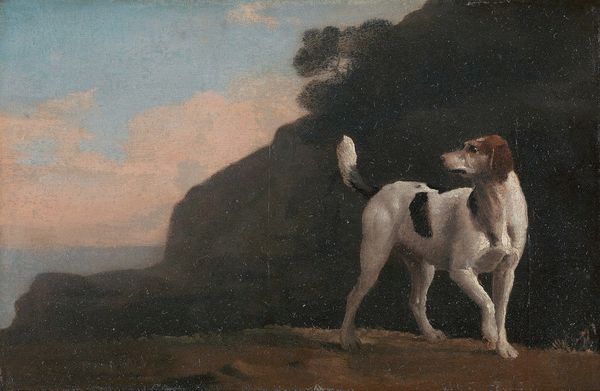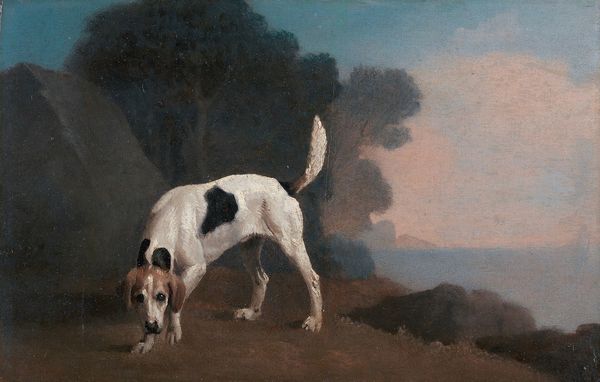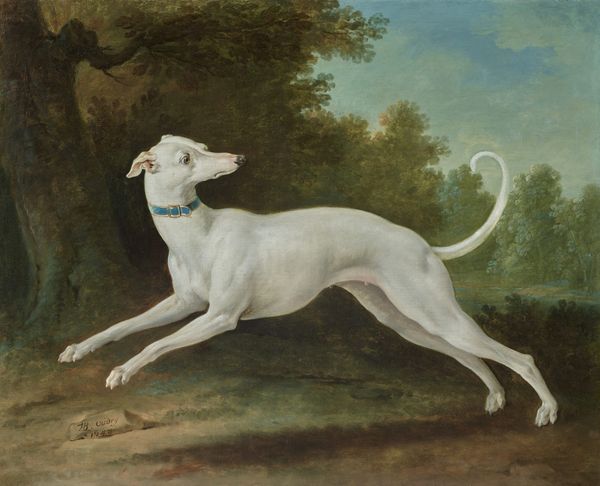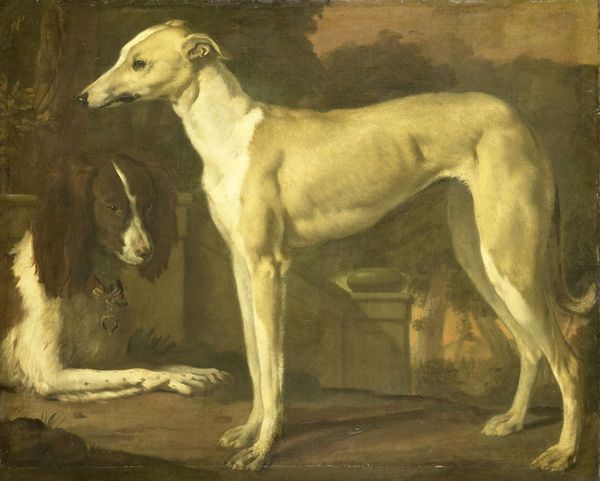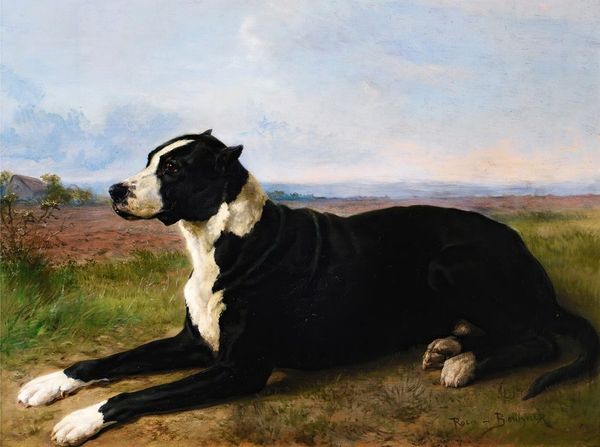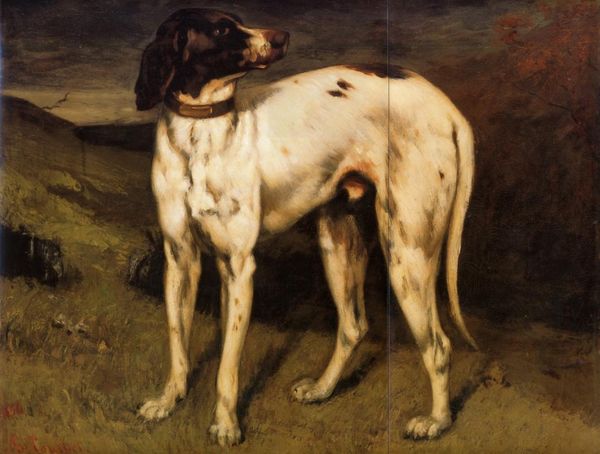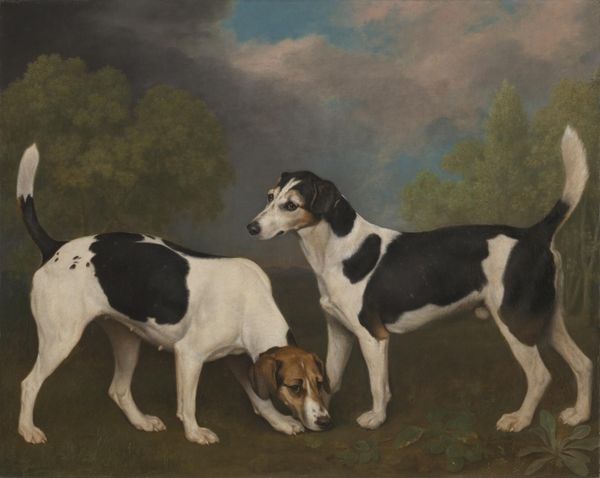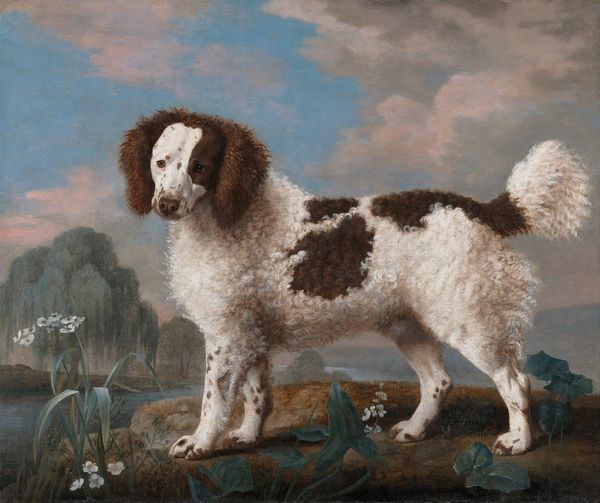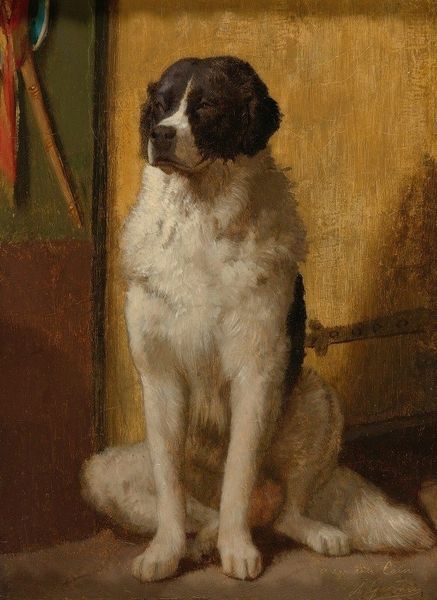
Copyright: Public Domain: Artvee
George Stubbs made this oil painting of Viscount Gormanston’s white dog sometime in the 18th century. Oil paint may seem conventional now, but it was once a cutting-edge technology. This was the key to the hyperrealism that defines Stubbs's work. Through this medium, he captures the dog’s musculature and smooth coat, resulting in a life-like representation. Note the almost photographic detail of the dog’s paws, and the way his body casts a shadow. The making of paint itself was an industry. Pigments were sourced globally, and ground by hand before being mixed with linseed oil. The process demanded skill and patience, and the results would have been prized. Oil paintings were luxury goods, and Stubbs gained fame and fortune by providing them to wealthy patrons like the Viscount. Consider that the image of the dog serves as both artistic representation and a symbol of status and ownership, deeply embedded within the social and economic structures of its time.
Comments
No comments
Be the first to comment and join the conversation on the ultimate creative platform.
